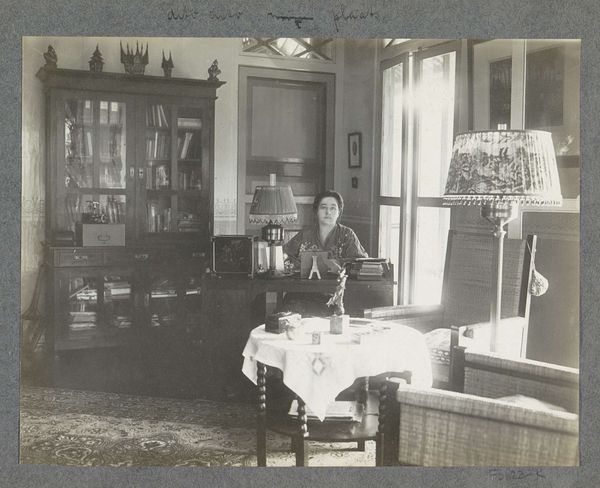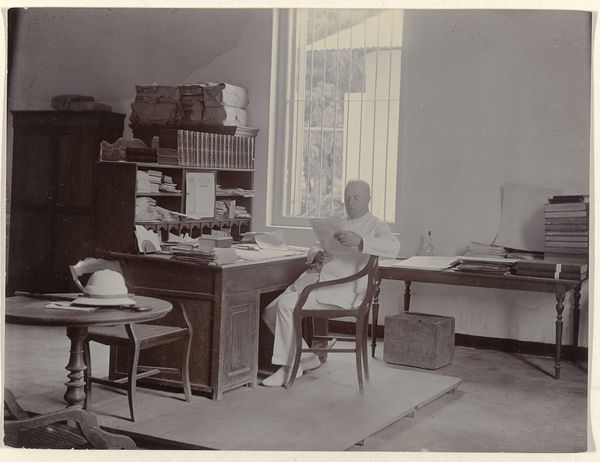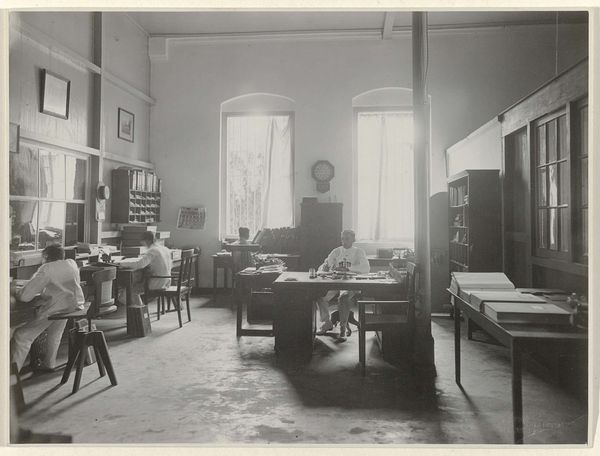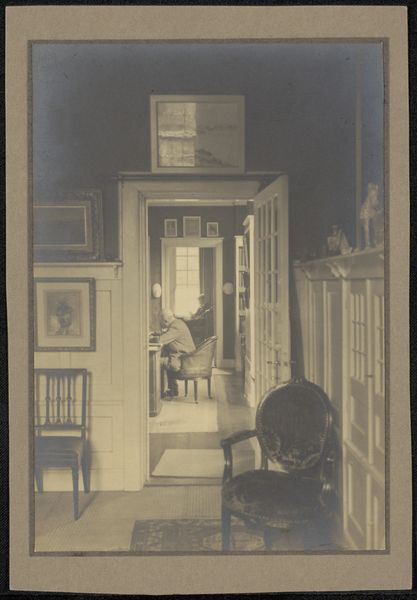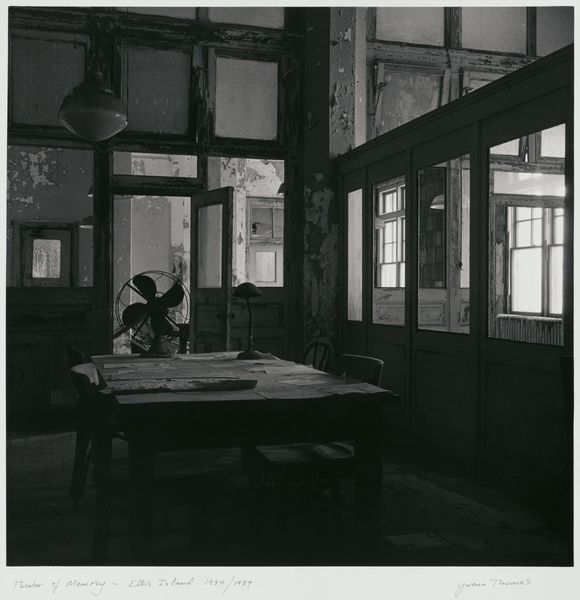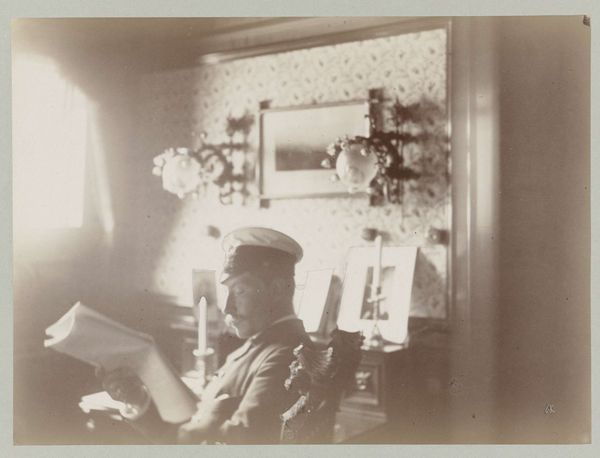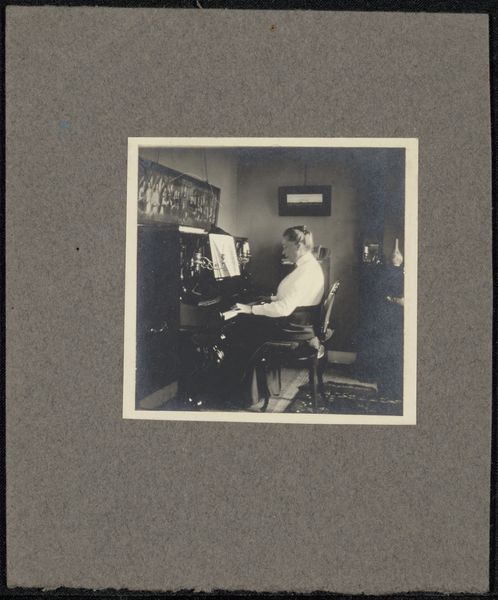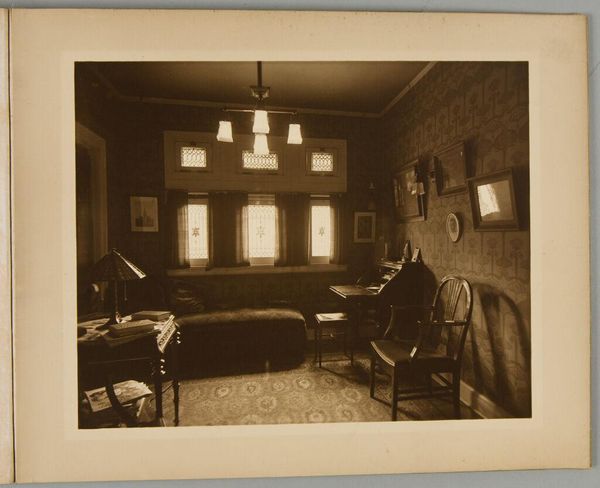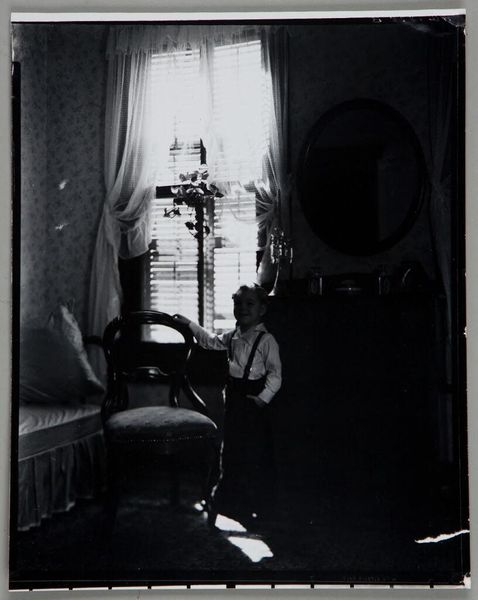
Marba Titzenthaler, dochter van de fotograaf, aan tafel in het woonhuis in de Friedrichstrasse, Berlijn Possibly 1917
0:00
0:00
photography
#
portrait
#
still-life-photography
#
german-expressionism
#
archive photography
#
photography
#
historical photography
#
genre-painting
#
realism
Dimensions: height 106 mm, width 79 mm, height 115 mm, width 83 mm
Copyright: Rijks Museum: Open Domain
Curator: This intriguing photograph is by Waldemar Titzenthaler, and it’s titled “Marba Titzenthaler, daughter of the photographer, at the table in the house in Friedrichstrasse, Berlin.” The image likely dates back to 1917. Editor: My first thought is how strikingly intimate it feels, like peering into a quiet domestic scene from another era. The strong backlighting and the almost severe composition add to this mood. Curator: Indeed, this work speaks volumes about the lives of women in early 20th century Germany, particularly within a middle-class family. The image can be interpreted within the context of societal expectations and the role of women, their education, and perhaps their confinement to the domestic sphere. Editor: Focusing on its making, the photograph employs stark contrasts. The interplay between light and shadow is crucial to how we perceive the domestic labor implicitly framing the sitter. There are obvious means and intention, like an interest in manipulating tone or revealing the details of the architecture itself, or that imposing table and overhead lamp. Curator: Precisely, consider the significance of Friedrichstrasse, a street in Berlin known for its commercial and cultural life. Locating the image here suggests a certain level of affluence and access. Yet, the photograph draws us into this very intimate, private space. The daughter, immersed in her work at the table, offers a counterpoint to the bustling city life outside. The act of documenting his own daughter, engaged in perhaps schoolwork or another personal task, reveals the complexities of familial dynamics and the power relations within them. Editor: The photo itself also raises interesting questions about photographic labor, its function as a document of life, but also, importantly, as a commodity meant for consumption. What does the father-daughter dynamic introduce, if we can look at it as something other than familial affection? It can easily symbolize that exploitative lens within social spheres where children can become workers—here, a docile subject or unwitting material, posed against their will. Curator: That’s a sharp observation. And examining the photograph’s creation reveals both the intimacy and the constructed nature of the scene. By understanding how the photographer framed his subject within a specific social and political context, we gain a richer appreciation of this family tableau. Editor: Right, it makes me think about how something ostensibly candid and natural can ultimately act like a commentary about class, visibility, production, and the power we enact in daily lives. Curator: Yes, examining it through this lens offers such depth. Editor: It definitely makes me want to seek more of Titzenthaler’s work.
Comments
No comments
Be the first to comment and join the conversation on the ultimate creative platform.
